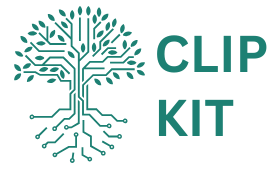Table of Contents
ToggleImagine a world where transactions happen faster than a cheetah on roller skates, and trust is built into the very fabric of technology. Welcome to the realm of Distributed Ledger Technology (DLT), where the days of waiting for bank approvals and worrying about fraud are rapidly becoming a thing of the past. DLT isn’t just a buzzword; it’s the superhero of the digital age, swooping in to save the day with transparency and security.
From cryptocurrencies to supply chain management, DLT is shaking things up and making life a whole lot easier. It’s like having a trusty sidekick that keeps everyone honest while ensuring information is accessible and tamper-proof. Dive into the fascinating world of DLT, where innovation meets reliability, and discover how it’s transforming industries one block at a time.
Overview of Distributed Ledger Technology
Distributed Ledger Technology, or DLT, records digital transactions across multiple locations simultaneously. Each participant in the network maintains a copy of the ledger, ensuring that transactions remain transparent and immutable. This decentralized approach enhances trust among individuals and organizations.
Creating a secure environment, DLT employs cryptographic techniques. These techniques safeguard data from tampering and unauthorized access. Because of this security, many industries, including finance and healthcare, increasingly adopt DLT.
Applications of DLT extend beyond cryptocurrencies. For instance, supply chain management benefits from improved traceability. By tracking products in real-time, companies can streamline operations and reduce fraud risks.
Governments recognize the potential of DLT as well. Regulatory frameworks are evolving to support digital innovation while ensuring compliance with existing laws. This alignment promotes broader acceptance of DLT solutions across various sectors.
Furthermore, smart contracts represent another significant aspect of DLT. These self-executing contracts automate agreements, reducing the need for intermediaries. Automation speeds up transaction processes, resulting in cost savings for businesses.
Many organizations explore integration strategies for DLT. Pilot programs test its capabilities in specific applications, revealing valuable insights. Such experiments demonstrate DLT’s adaptability and promote its continued growth in the digital landscape.
As adoption grows, collaboration among stakeholders becomes crucial. Partnerships between tech companies, governments, and industry leaders enhance DLT’s development. This collective effort paves the way for innovative solutions and widespread implementation.
Key Features of Distributed Ledger Technology

Distributed Ledger Technology (DLT) offers several key features that enhance its effectiveness across various applications. Among these traits, decentralization, transparency, and security stand out as critical components.
Decentralization
Decentralization eliminates the need for a central authority in data management. Each participant holds a copy of the ledger, enabling real-time updates and synchronization across every node. This structure enhances resilience against data breaches and single points of failure. Stakeholders trust the system more due to the distributed nature, as no single player exerts control over the entire network. As more organizations adopt decentralization, they experience increased efficiency, particularly in financial transactions and supply chain processes.
Transparency
Transparency acts as a fundamental aspect of DLT, allowing all participants to view the same data. With each transaction recorded across the network, participants enjoy a clear, real-time view of the ledger. This visibility reduces risks of fraud as any unauthorized changes are easily detectable. Transparency fosters greater confidence among users, as they can independently verify information without relying on intermediaries. Financial institutions benefit significantly, as enhanced transparency strengthens client trust and complies with regulatory requirements.
Security
Security is paramount in DLT, achieved through advanced cryptographic techniques. Each transaction undergoes rigorous encryption, protecting it from tampering and unauthorized access. As a result, it greatly reduces the likelihood of fraudulent activities. Regular updates and security measures safeguard data across all participants, contributing to its integrity. Implementing security protocols ensures that sensitive information remains confidential, making DLT particularly appealing within sectors like finance and healthcare. Overall, the combination of decentralized architecture, transparency, and robust security demonstrates DLT’s capacity to revolutionize how transactions occur globally.
Applications of Distributed Ledger Technology
Distributed Ledger Technology (DLT) showcases a wide array of applications across numerous industries. Financial services, supply chain management, and healthcare highlight its versatility and transformative potential.
Financial Services
DLT revolutionizes financial services through enhanced transaction speed and security. Financial institutions leverage DLT to execute cross-border transactions quickly, minimizing costs and delays. Cryptocurrencies, a primary use case, empower individuals with decentralized financial solutions. Additionally, blockchain technology enables transparent record-keeping, reducing fraud risks and improving audit efficiency. Organizations in this sector explore innovative products built on DLT, driving competition and user trust.
Supply Chain Management
Improved traceability is a hallmark of DLT in supply chain management. Each step in the supply chain records transaction data on a shared ledger, promoting visibility and accountability. Businesses access real-time information, enabling quick responses to disruptions and ensuring quality control. Reduced fraud risks are achieved as all parties can verify information independently. Retailers and manufacturers adopt DLT to track inventory more efficiently, allowing for better resource allocation and enhanced customer satisfaction.
Healthcare
DLT transforms healthcare management by streamlining patient data handling. Secure, immutable records safeguard sensitive health information while ensuring only authorized personnel can access it. Interoperability among healthcare providers improves collaborative care, as each party views consistent, up-to-date data. Additionally, DLT facilitates drug traceability, minimizing counterfeit medication risks and enhancing patient safety. Hospitals and clinics adopt this technology proactively, fostering improved operational efficiency and patient outcomes.
Challenges and Limitations
Distributed Ledger Technology faces several challenges and limitations that affect its widespread adoption.
Scalability Issues
Scalability presents a significant challenge for Distributed Ledger Technology. As the number of transactions increases, many DLT systems experience slower processing times. High transaction volumes can lead to delays and increased costs. For instance, Bitcoin’s network can process about seven transactions per second, significantly less than traditional payment systems like Visa, which can handle thousands. Solutions like sharding and layer-two protocols are being explored to enhance scalability, but their implementation remains complex.
Regulatory Concerns
Regulatory concerns pose another obstacle for DLT adoption. Different jurisdictions have varying laws regarding cryptocurrency and digital assets, leading to uncertainty for businesses. Governments often struggle to establish comprehensive frameworks that balance innovation with consumer protection. Clarity from regulators can foster trust and encourage innovation, yet inconsistencies across regions complicate compliance. Many organizations advocate for clearer regulations to create a stable environment for DLT development.
Interoperability
Interoperability is critical for the success of Distributed Ledger Technology. Multiple DLT systems may operate in silos, reducing efficiency and collaborative potential. The lack of standardization makes it difficult for systems to communicate effectively, hindering data sharing across different platforms. Establishing common protocols can enhance compatibility and facilitate seamless interactions between diverse DLT networks. Initiatives like cross-chain technology aim to address these interoperability challenges but require significant cooperation among stakeholders.
Distributed Ledger Technology is poised to redefine digital transactions across various sectors. Its unique features of decentralization transparency and security make it an indispensable tool for enhancing trust and efficiency. As industries continue to explore DLT’s potential the collaboration among stakeholders will be vital in overcoming existing challenges.
The ongoing evolution of regulatory frameworks and technological advancements will likely shape the future of DLT. With its ability to streamline processes and reduce fraud risks organizations that embrace this technology stand to gain a competitive edge. As adoption increases the impact of DLT on the global economy could be profound paving the way for a more transparent and secure digital landscape.




